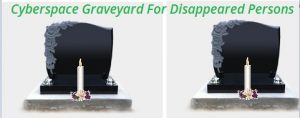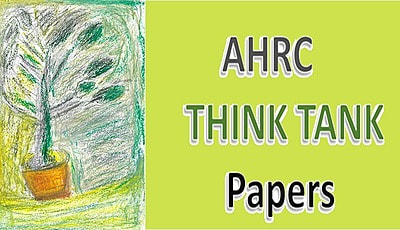The AHRC model for torture prevention
The final report for the evaluation of the ‘Prevention of Police Torture in Sri Lanka’ project in November 2009 by Welmoed E Koekebakker and Loreine B dela Cruz refers to the AHRC model of torture prevention [For full report see Ethics in Action vol 3, no 6, December 2009]. This article discusses the elements making up the model.
The first and most basic element of the AHRC model is to connect local human rights activists and solidarity groups with victims of torture. Access to legal, medical and psychological services for torture victims can be enhanced by their quick and speedy linkage with concerned individuals and groups who can take immediate steps for their protection and welfare. This is necessary because in nearly all cases torture victims come from poverty stricken backgrounds. They lack financial resources, knowledge, communication skills and also social connections, in order to obtain quick access to social services. Trained and motivated human rights activists and other individuals, including persons from religious groups, can provide the necessary linkage to the victim. To do this effectively, the concerned groups and individuals need to situate themselves closer to the various parts of the country that the victims come from.
In a society like Sri Lanka, where caste and other grounds of discrimination like ethnicity can create significant differences of social status, linkages to solidarity groups creates the necessary self confidence in victims to embark on a long journey seeking justice and/or rehabilitation.
These solidarity groups need to be known to the public so that victims can approach them promptly after incidents of torture occur. The activists should be prepared to keep a hospitable and friendly atmosphere in which the victims find comfort. At the same time they must have the necessary skills, equipment and capacity to conduct interviews and relevant documentation, and to provide preliminary assistance needed by the victims. The groups need to have access to lawyers as well as medical personnel who can constantly be consulted and who would come to offer their services.
Once such relationships start between victims and these groups, there needs to be a readiness to engage in many different activities over a long period to help the victims. Over the years, these groups will acquire new experiences and knowledge about law, psychology, enabling them to better deal with these situations. Above all, the groups will need to develop skills and strategies to protect the victims and themselves. Training and discussions can significantly help in such development.
The next stage of the model is lobbying and advocacy. At this stage, the local groups obtain assistance from a regional human rights organization, the Asian Human Rights Commission (AHRC), based in Hong Kong. The AHRC has its own staff skilled in various aspects of lobbying and advocacy. A quick system of receiving information from the local groups about victims is arranged through the Urgent Appeals desk. This desk receives information and verifies it and then prepares documents that are sent to government authorities, UN agencies and also to international human rights groups so that interventions are made to help the victims and the human rights defenders from various sources. The relationship between the AHRC and the local groups also results in a documentation process; all available documents made or received by the local activists, lawyers, doctors and even psychologists are transmitted to the AHRC office. The AHRC staff then study and record these systematically. All the materials collected are maintained within an electronic documentation system and made available—with necessary precautions to protect victims—to many sources worldwide.
Once the factual basis is collected, the local groups and the AHRC work together with lawyers to address the legal aspects. This brings the groups involved into the court processes from lower courts to higher courts. During this time, an enormous amount of data is gathered on each case; together, the cases constitute a considerable amount of documentation that can be used by any expert or researcher. On this basis, there is a constant analysis of the system, which is then regularly published by way of statements, reports and other forms of media publications. As more information is gathered, it becomes the basis for the development of books and other publications. All issues are analyzed on the basis of international law and human rights legal theory.
One special publication, article2, is devoted to such theoretical studies. All these materials are disseminated to large audiences and kept in websites for reference.
The third stage of the model is international lobbying. The AHRC together with RCT and other international organizations constantly take up all matters relating to torture with various human rights agencies. Almost daily the UN special rapporteur against torture receives information on torture related matters from the AHRC network. Oral and written submissions are constantly being made. Networks are developed to work together with all other concerned groups and persons to keep up the efforts on torture prevention.
Theoretically, the focus in this model is always kept on two aspects: the victims and the defective legal system of Sri Lanka, which is the main cause of torture. This means that while every attempt is made to help the victim, everyone’s attention is constantly kept on the systemic issues from which the victim has suffered. Mere legal redress in an individual case or healing activities does not suffice when the system itself is seriously flawed. The system creates victims all the time; therefore observations and analysis on the system have to be kept up with the view to pursue legal reforms. The core of this project is a preoccupation with legal reforms; the identification of areas needing reforms, the development of arguments against systemic abuse, and the detailed exposure of all aspects of such abuse are constant activities within this model.
In order to achieve reforms quickly, constant public education and pressure is needed. Not only do state actors need to be alerted and educated, but non-state actors and civil society in general need to be constantly engaged with the issue. In conflict ridden societies like Sri Lanka, there are many problems that demand public attention. Any lobby that wants to be successful must therefore constantly engage in a contest to keep its issues at high attention. This can only be done by highly skilled writing and publication on the one hand, and a capacity for wide dissemination on the other. Here human rights groups face the problem of resources; the state and others have mega resources in the media, while human rights groups do not have the financial ability to maintain such services. The only economically possible alternative today is to rely extensively on electronic media. For this reason, the AHRC model holds the acquisition of IT, communication and media skills as vital.
In countries such as Sri Lanka attention to the psychological aspects for the assistance of victims has not developed in the state sector. The burden on this falls on civil society for the most part. Thus the human rights groups involved in this work have to develop knowledge and the capacity to improve their knowledge in trauma counseling and other methods of healing. Over the years the groups working in this model have developed their appreciation of this are of work. In recent years with the help of organisations such as RCT and also some local and regional psychologist must knowledge has been gained in these areas. Testimonial therapy is also one of the concerns that the groups are developing their knowledge and skills in.
The test of success in this model is to gain public confidence locally as well as internationally. By consistent work the groups involved have gained considerable public sympathy for their efforts in this direction.



